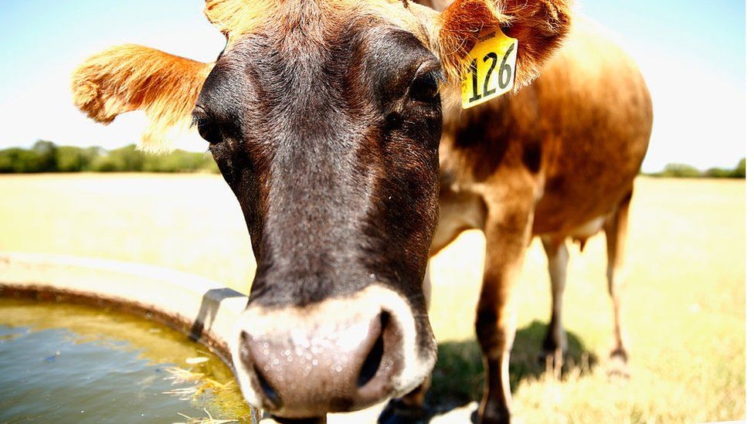New Zealand has unveiled a plan to tax sheep and cattle burps in a bid to tackle one of the country's biggest sources of greenhouse gases.
It would make it the first nation to charge farmers for the methane emissions from the animals they keep.
New Zealand is home to just over five million people, along with around 10 million cattle and 26 million sheep.
Almost half the country's total greenhouse gas emissions come from agriculture, mainly methane.
However, agricultural emissions have previously not been included in New Zealand's emissions trading scheme, which has been criticised by those calling for the government to do more to stop global warming.
"There is no question that we need to cut the amount of methane we are putting into the atmosphere, and an effective emissions pricing system for agriculture will play a key part in how we achieve that," New Zealand's climate change minister James Shaw said.
How is methane emitted?
Around 40% of CH4 comes from natural sources such as wetlands but the bigger share now comes from a range of human activities, ranging from agriculture, such as cattle and rice production, to rubbish dumps.
One of the biggest sources is from the production, transport and use of natural gas and since 2008 there has been a big spike in methane emissions, which researchers believe is linked to the boom in fracking for gas in parts of the US.
In 2019, methane in the atmosphere reached record levels, around two-and-a-half times above what they were in the pre-industrial era.
What worries scientists is that methane has real muscle when it comes to heating the planet. Over a 100-year period it is 28-34 times as warming as CO2.
Over a 20-year period it is around 84 times as powerful per unit of mass as carbon dioxide.
However, there is much more CO2 than methane in the atmosphere and individual molecules of it can remain there for hundreds of years.
Latest Stories
-
Dikan Center launches ‘HerPress’ fellowship to empower Ghana’s female journalists
4 minutes -
Former US Tennis Association President to lead Tennis Clinic in Ghana
17 minutes -
15 media professionals begin journey in groundbreaking Ghana-China fellowship
19 minutes -
Liverpool sign Wirtz for club record fee
24 minutes -
No one should be arrested without evidence – Justice Ackaah-Boafo
28 minutes -
Mike Eghan’s family informs former President Kufuor of his passing
36 minutes -
Top 15 reasons to hit the Ecobank-JoyNews Habitat Fair at Achimota Mall today
47 minutes -
Judges must be paid well to make legal profession attractive – Supreme Court nominee
53 minutes -
Unilever Ghana unveils new chapter for Pepsodent Charcoal with “Crafting Smiles” experience
1 hour -
18,000 babies are born annually with sickle cell disease in Ghana – Dr Kwarley Asare
1 hour -
World Sickle Cell Day: Ghana Institute of Clinical Genetics urges collective action as it marks 50 years of sickle cell care
1 hour -
Woman drowns in abandoned galamsey pit at Anyaaso in Ashanti Region
2 hours -
‘Ghana Must Go’ wows patrons, sets stage for global tour
2 hours -
Hearts appoint Didi Dramani as head coach
2 hours -
Justice Ackaah-Boafo stumbles through nat’l pledge in light-hearted moment during vetting
2 hours

